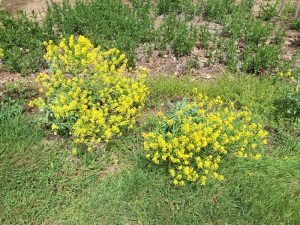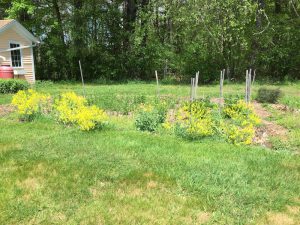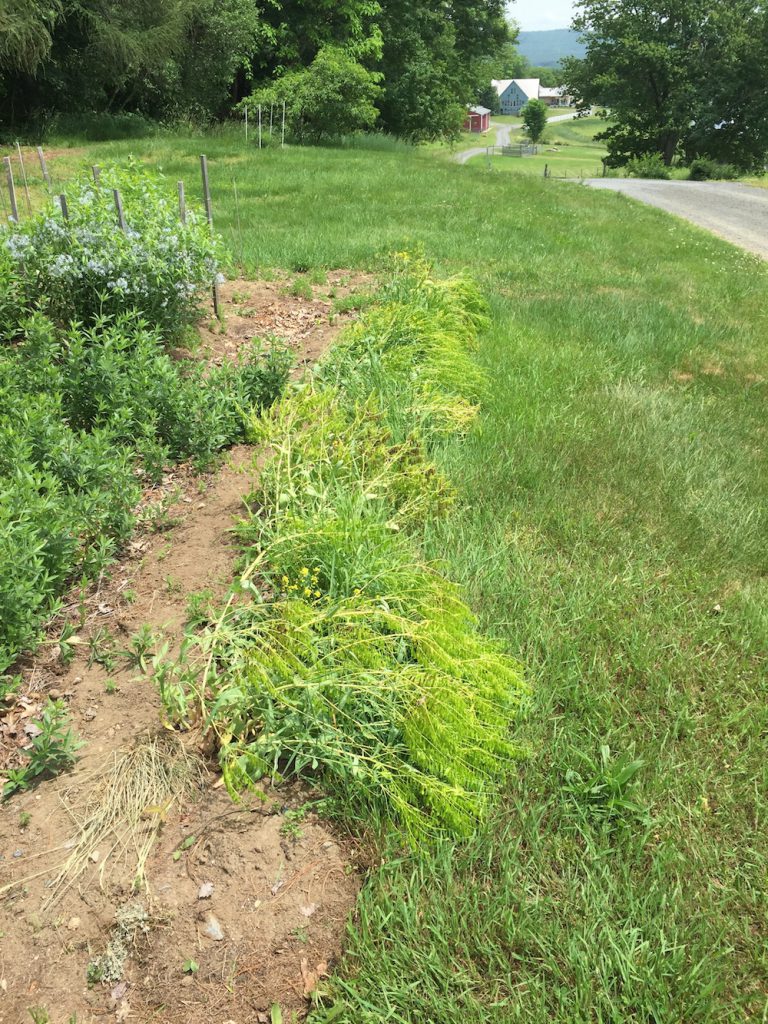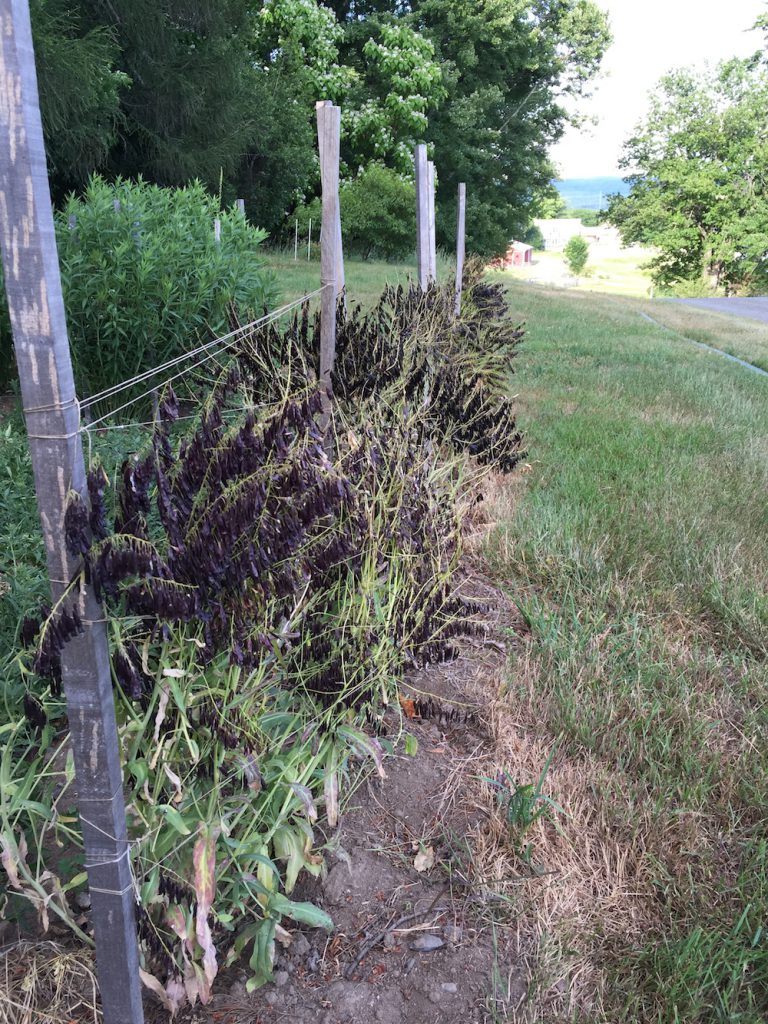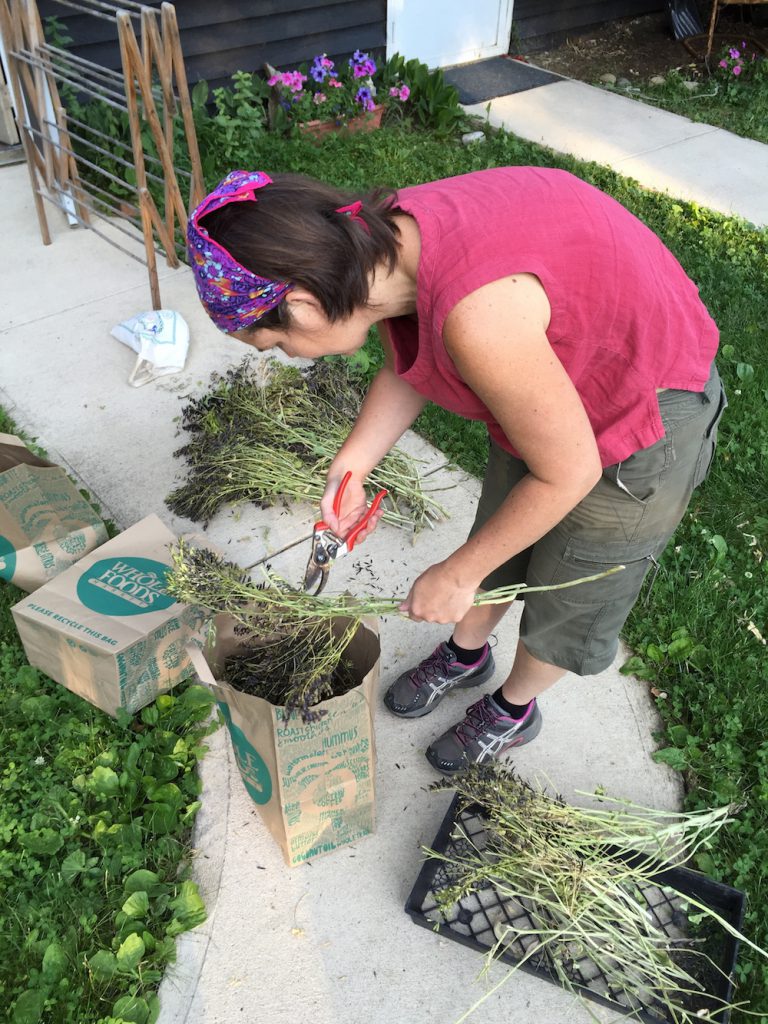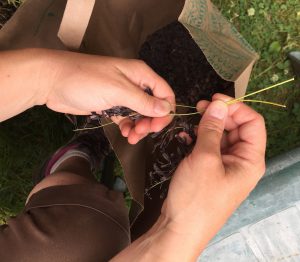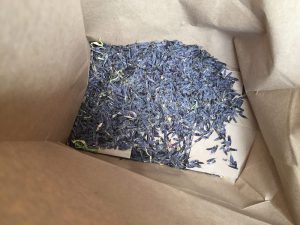Woad is a biennial, which means it flowers and sets seed in the second year of growth. I thought I’d share a little bit about the life cycle of woad and how last year’s plants fared this spring and summer. Here are some photos of the state of things over at the dye and fiber plant garden at Bramble Hill Farm on May 15, 2016.
The woad was in bloom:
It is one of the earliest plants to bloom, and it has very fragrant yellow flowers that are sought-after by insects. I always find it very cheery. Here’s a view of the row of woad from a little further away:
Here is the row of woad plants once the seeds have set. They were a very bright yellow-green at this point on June 4th, 2016.
I staked them up so they wouldn’t flop onto the lawn and get mowed over. Here they are on June 23rd, the day I harvested them:
The next day, June 24th, I cut the smaller seed-bearing branches off of the main stalks and put them in paper bags in the car to dry. This was in an effort to avoid having them take up a ton of space in the apartment, van, and backyard, as they had the day before. I also wanted to avoid having seeds drop everywhere. It worked really well. The weather was very hot and dry, so they dried quickly, and they weren’t in the way.
Stripping the seeds off the stalks for storage took a while. I split the task up into a few sessions. Even though the dry weather meant an agonizing amount of hauling water, it was very pleasant to sit outside and work because it wasn’t humid at all. Here’s my set-up. I stripped the seeds off of the small stalks, and they fell into another paper bag. Then I put the stalks in a bucket, and eventually dumped the stalks in the woods.
On the left hand side is a close up of me stripping the seeds off the stalks. I start near the bottom of the stalk and cup the bottom-most seeds between my fingers and thumb. I drag and pull up toward the top of the stalk, and the seeds pop off. If you pull in that direction, you avoid getting poked by the sharp, spiky stiffness of the stalks. On the right hand side is the bag filling up with gorgeous, glossy purple-black seeds:
I still have plenty of seeds left from 2015, and they stay viable for several years, so you might wonder why I bothered to save seed this year. One reason is that I hate to waste abundance, and another is that they are just so beautiful it’s a pleasure to spend time with them. If I had to pick a favorite dye plant, it would probably be woad. I love every phase of its growth. Maybe the most important reason is that you never know what a growing season will bring. Nourished by the plants’ deep taproots, the woad seeds matured just fine in the earlier part of the spring and summer before the dry weather really had an impact. But who knows what another season might bring in terms of weather or other hazards. So, I’d rather have a surplus than find myself without woad seeds in the future.

